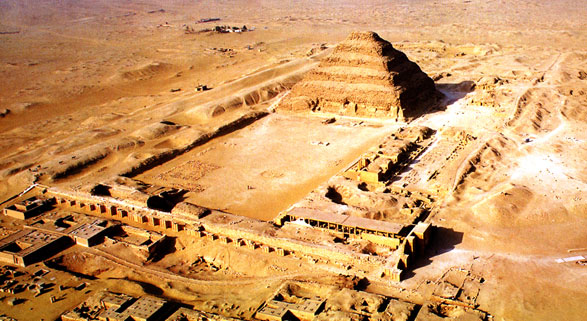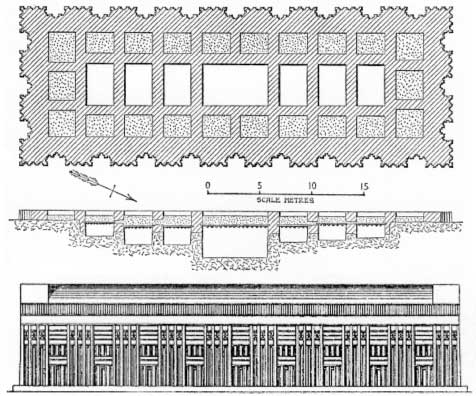
THE π PROPORTION AT SAQQARA
Just south of Giza, the step pyramid at Saqqara is believed to have been the first stone pyramid built in Egypt.
Jean-Philippe Lauer spent most of his life excavating the site of the step pyramid and he found that the pyramid was surrounded by a massive enclosure wall 34 feet high and 5,398 feet long. 34 feet is equal to 20 royal Egyptian cubits and 5,398 feet is equal to 3,141.5 cubits, a very precise expression of π times 1,000. Lauer's illustration below shows the original design of the pyramid complex, although the northern end of the complex is still only partially excavated and is shown filled with sand.

Djoser ruled during ancient Egypt's third dynasty, but Saqqara was a royal burial ground from the beginning of dynastic Egypt. In the 1950's, Walter Emery excavated several of the early dynastic tombs at Saqqara, including the tomb of Djer, the second pharaoh of the first dynasty following the unification of ancient Egypt. Emery's illustration of Djer's tomb below also suggests the ancient 22/7 ratio with a line of seven magazines surrounded by 22 supports.
